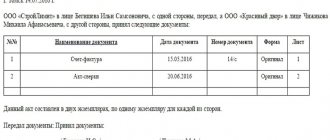Estimate
| Reviews: | 0 | Views: | 6271 |
| Votes: | 0 | Updated: | n/a |
File type Text document
?
Ask a question Remember: Contract-Yurist.Ru - there are a bunch of sample documents here
CHARTER of a state institution 1. General provisions 1.1. State institution ______________________________, hereinafter referred to as the “Institution”, was created in accordance with the Civil Code of the Russian Federation on the basis of order ______________ ______________________ dated “__”________ 20__ No. ____. (specify organization) 1.2. An institution is a state organization created to provide __________________________________________ conditions for (specify the organization) the exercise of its powers on _________________________________. 1.3. Full official name of the Institution: State Institution “________________________________”. Abbreviated name: State institution “_________”. 1.4. The institution has a seal with the image of the State Emblem of the Russian Federation and its name, a simple round seal, a corner stamp, forms and other details. 1.5. Postal address of the Institution: _________________________________. 2. Legal status of the Institution 2.1. The Institution is state-owned and belongs to federal property, the founder of which is “__________”, under whose jurisdiction the Institution is located. 2.2. The institution is a legal entity from the moment of state registration and has the right to: independently use the property assigned to it by the founder with the right of operational management to ensure financing of the main directions of the statutory activities, as well as belonging to it: cash, property and other objects, intangible assets in the form of intellectual products and creative labor that are the result of his activities, as well as income from his own activities and property acquired with these incomes; on its own behalf, acquire property and non-property rights, bear responsibilities, act as a plaintiff and defendant in courts; reflect on an independent balance sheet the composition and value of the Institution’s property and its own property; have settlement, currency and other accounts in banking and credit institutions of the Russian Federation. 2.3. For its obligations, the Institution bears property liability in the manner established by the civil legislation of the Russian Federation. 2.4. The institution in its activities is guided by the current legislation, regulations and orders of ________________________ _________________________________________________ and this charter. 2.5. An institution, in relation to the property assigned to it, exercises, within the limits established by law, in accordance with the goals of its activities, the tasks of the owner (founder) and the purpose of the property, the rights to own, use and dispose of it. 2.6. The owner (founder), the property assigned to the institution, with the right of operational management, has the right to withdraw excess, unused or misused property and dispose of it at his own discretion. 2.7. An institution does not have the right to alienate or otherwise dispose of the property assigned to it and property acquired from funds allocated to it according to estimates without the permission of the owner (founder). 2.8. The institution is granted the right to carry out income-generating activities. Income received from such activities and property acquired from these incomes comes to the independent disposal of the Institution and is accounted for on a separate balance sheet. 2.9. An institution has the right, with the consent of the owner (founder), to act as a founder of enterprises and organizations of any organizational and legal forms in accordance with the Civil Code of the Russian Federation. 2.10. The institution is liable for its obligations with all its property. The institution is not liable for the obligations of the founder. 3. Subject and goals of the activity 3.1. The institution was created with the aim of ensuring the safety, operation and maintenance of property under the operational management of the owner (founder), developing the technical equipment base of the owner and his territorial agencies, as well as improving the mechanism of social guarantees for employees. 3.2. The subject of the Institution's activities are: ensuring the maintenance and operation of buildings occupied by the owner (founder), buildings and facilities of Institutions, objects of social, cultural and medical and recreational purposes; organization of repair, construction, installation work, and, in necessary cases, capital construction, including through equity participation in the interests of the Founder; making investments at the expense of one’s own funds in the development of the social sphere in the interests of the founder and generating profit in the interests of the Institution; organization of social services and auto technical services in the interests of the founder; organizing and conducting internships and advanced business training for employees in Russia and abroad, training them to work with computer equipment; carrying out, in order to diversify, other activities that do not contradict current legislation, if this is ultimately aimed at developing the main activities of the Institution. 4. Finances and property of the Institution 4.1. The Institution is financed according to the approved estimate, including from the Institution’s own funds. 4.2. The property of the Institution consists of fixed and working capital, as well as other valuables, equipment and materials, the cost and list of which is reflected on an independent balance sheet. 4.3. The property of the institution is in state ownership and belongs to the Institution with the right of operational management. 4.4. The right to operational management of property in respect of which the owner (founder) has decided to assign it to the Institution arises for this Institution from the moment the property is transferred under the deed. 4.5. The institution is granted the right to carry out income-generating activities. The income received from such activities, as well as the property acquired from these incomes, comes to the independent disposal of the Institution. 4.6. Fruits, products and income from the use of property under operational management, as well as property acquired under an agreement or other grounds, enter the operational management of the institution in the manner established by the Civil Code of the Russian Federation, other laws and other legal acts regulating the emergence of property rights . 4.7. The right to operationally manage property is terminated on the grounds and in the manner provided for by the Civil Code of the Russian Federation, other laws and other legal acts, as well as in cases of lawful seizure of property from an institution by decision of the owner (founder). 4.8. When the ownership of an institution is transferred to another person, this Institution retains the right of operational management of the property belonging to it. 5. Management bodies of the institution 5.1. Management of the Institution in accordance with the current legislation of the Russian Federation and this Charter is carried out by the General Director on the principle of unity of command. 5.2. The General Director of the Institution is appointed to the position by the owner (founder) on the basis of a contract. 5.3. The General Director is accountable to the owner (founder0) and carries out his activities in accordance with the current legislation, this charter, orders and orders of the owner (founder), the contract concluded with him. 5.4. Decisions on issues within the competence of the General Director are made independently by him on the basis of unity of command 5.5. The General Director manages the current activities of the Institution and has the following rights and responsibilities: without a power of attorney, acts on behalf of the Institution, represents its interests in all institutions, enterprises and organizations both in Russia and abroad; manages the property of the Institution within the limits established current legislation, this Charter and the contract concluded with it; makes decisions on business trips of employees; hires and dismisses employees of the Institution, applies incentive measures to them and imposes penalties on them; concludes agreements in Russia and abroad on behalf of the Institution; on the basis of current legislation and this charter, issues orders, instructions, instructions on issues within the competence of the Institution, mandatory for execution by all employees of the Institution; distributes responsibilities between Deputy General Directors and heads of structural divisions; approves the structure and staffing; enjoys the right to dispose of the funds of the Institution. 5.6. Relations between employees of the Institution are built on a contractual basis and are regulated by labor legislation. 5.7. The General Director develops and implements measures to ensure the safety of state and commercial secrets and their proper protection. 6. Reporting and control 6.1. The institution submits financial and statistical reporting to the relevant authorities in the manner prescribed by law. 6.2. The owner (founder), as necessary, carries out inspections of the activities of the Institution, reports their results to the Institution and takes appropriate measures. 7. Labor relations 7.1. Relations between the employee and the Institution arising on the basis of an employment agreement (contract) are regulated by the labor legislation of the Russian Federation. 7.2. The institution provides a legally guaranteed minimum wage and social protection measures for workers. 7.3. The form, system and amount of remuneration for employees is established by the Institution independently in accordance with current legislation, the approved budget, as well as income received. 8. Social activities 8.1. The institution takes measures to develop social infrastructure, improve working conditions, and provides compulsory social and medical insurance for employees and members of their families in accordance with the law. 8.2. The institution is obliged to provide its employees with safe working conditions and bears financial responsibility in accordance with the procedure established by law for harm caused to their health and loss of ability to work. 9. Liquidation and reorganization of the Institution 9.1. The activities of the Institution are terminated (the Institution is liquidated): by decision of the owner (founder); By the tribunal's decision. 9.2. Reorganization of the Institution (merger, accession, division, separation, transformation) can be carried out by decision of the owner (founder), in accordance with current legislation. 9.3. Voluntary liquidation of the Institution is carried out by a liquidation commission appointed by the owner (founder). 9.4. Liquidation is considered completed and the Institution ceased to exist from the moment the corresponding entry is made in the State Register. 9.5. Documents of permanent storage of the liquidated Institution are transferred for state storage to the archives of the Mosarkhiv association, and other documents to the archive of the administrative district on the territory of which the Institution is located.
Download the document “Sample. Charter of a state institution"
What is it needed for?
The charter is a constituent document that coordinates all activities of the organization.
Based on it:
- Coordination of relations between the founders takes place. Thus, it regulates the activities of the company’s management and determines which issues can only be resolved by a meeting of the workforce.
- The rights and obligations of all participants in the organization are established. For example, thanks to the Charter, it is possible to exclude from the list of founders those persons who “shirk” from performing their direct duties or abuse their powers.
- The procedure for exiting an LLC, selling shares of a business, and changing management personnel is regulated.
- The methods of profit distribution are regulated.
By the way, the Charter, which sets out not only the main provisions, but also the nuances of the LLC’s activities, allows you to avoid the preparation of a huge number of other documents, for example, job descriptions.
In addition, it will not be possible to register a newly formed LLC without a Charter. It is a mandatory document for the tax office. Based on the Charter of the enterprise, data is entered into the State Register.
Requirements for the Charter
The development of the Charter should be taken as seriously as possible. Errors may be grounds for refusal of registration. In addition, any inaccuracies and shortcomings can negatively affect the work of the company as a whole.
As such, there are no requirements for the content of the Charter.
However, it must comply with some legislation:
- Article 5 of Federal Law 129 “On state registration of legal entities and individual entrepreneurs”;
- Articles 3, 52, 54, 66.3, 89 of the Civil Code of the Russian Federation;
- Articles 4, 12, 32 of the Federal Law “On Limited Liability Companies”.
In addition, the content of the Charter must comply with Federal Laws No. 312 and No. 99. The fact is that in 2008 Federal Law No. 312 “On Amendments to the Civil Code of the Russian Federation” was adopted, and in 2014 Law No. 99 “On Amendments to Chapter 4 of the first part of the Civil Code” was developed and adopted. Thanks to these amendments, certain articles of the Civil Code (related to registration and running a business) have changed significantly. Today, newly created companies must develop their Articles of Association taking these changes into account. Those organizations that began work earlier than the specified deadlines make amendments at the first changes to the document.
Contents of the company's charter
Like any other document, the charter has a certain content. The requirements for the charter are quite strict and have a special procedure for implementation. First of all, every page except the title page must be numbered. The first sheet must contain a header, which indicates the name of the founders’ decision to create the organization and the date of its adoption. In the middle, indicate the name of the document, namely “charter”, organizational and legal form (for example, limited liability organization) and the name of the company. At the bottom, write down the city and date the document was drawn up and signed.
The following sections follow:
- General provisions – the name of the company with Russian and, if desired, abbreviated and foreign versions. In addition, such a section must indicate the address of the organization’s location and the general purpose of creating the company - commercial profit or social activities.
- Legal status of the organization. This section contains information about the legal capabilities of the organization. In most cases, such provisions copy the provisions of the Law, which specify the rights and obligations of the company depending on the form of activity.
- Legal aspects of founding activities. First of all, in this section it is necessary to indicate the personal information of each founder - names, passport details. In addition, the boundaries of the rights and obligations of such persons are established. The most important thing is to indicate the share of each founder in the capital. In addition, it is in this section that it is necessary to determine the procedure for transferring your part to other persons.
- Founding meetings. The principles of drawing up agendas for consideration, the procedure for meetings of founders, and the competence of each member of the meeting are described. In addition, it is necessary to specify the procedure for notifying the founders about the meeting, namely: the period within which such a message must be sent and the frequency of holding meetings.
- The executive division of the organization. In most cases, the position of general director is introduced. This section sets out the rights and responsibilities of such a person, the process for his appointment to such a position, the period for which he is elected and the process for dismissal or extension of the position. It is also possible to introduce, if necessary, the position of an accountant and secure the basic rights and responsibilities of such an official.
- Organization finances. This section contains the company’s financial plans, which are reflected in quarterly and annual forecasts. In addition, the resources owned by the organization, the procedure and principles for distributing the financial results of the company’s activities among the company’s founders are prescribed.
- Inspector. The section is intended to indicate the need to introduce the position of auditor, its procedure and frequency of appointment of inspections, rights and responsibilities.
- Document flow. It indicates where exactly and how all documents that are related to the organization are stored - minutes of meetings, charter, etc. In most cases, the above documents are stored at the company's location.
- Procedure for liquidation and reorganization. We indicate the reasons for such processes and the order in which they are carried out. It is possible to both duplicate the legislation and prescribe your own procedure. The main thing is that he does not contradict the norms of the Law in any way.
This procedure for presenting information in the charter is the most common. But you can swap sections, there’s nothing wrong with that. The main thing is that all the necessary information is in such a document. If you need to add any more data, you can easily create separate sections or write them in “Other provisions”.
Appearance
The development of the Charter is carried out long before the organization begins its activities.
To arrange it correctly, it is important to adhere to the following recommendations:
- The charter must be updated. It is important to do this correctly: remove all pins and staples, check that the sheets are lying one after another in the correct sequence. For stitching, it is recommended to use an awl or a large needle.
- Page numbering begins on the page following the title page. In this case, the title page remains without a number, and the Arabic numeral 2 is placed on the next page.
- On the back of the last page there must be a sealing sheet on which the total number of pages is indicated, the signature of the manager and the company seal are affixed.
To make it more convenient to use the Charter, it is recommended to draw it up in two copies: one is kept in the company’s office and serves for its internal work, the second is presented to government agencies. We also note that the Charter can be copied (all sheets, with the exception of the sealing sheet). A copy is kept by the tax office and is issued upon request in free form. A prerequisite for such a request is the signature of the managing person with the seal of the organization (but it is not needed if this is the initial registration).
Content
The Charter contains mandatory information about the organization, which does not depend on the number of founders:
- Full and abbreviated name. Data must be entered in Russian, and if necessary, additionally in any other language.
- Legal address of the company. If there are several founders, indicate the address of the premises that the company leases or purchased (you must attach a copy of the lease or purchase and sale agreement).
- Types of activities of the organization. It is recommended to indicate in the Charter the possibility of expanding this list (over time, significant adjustments and additions may be made to the company’s activities).
- Management staff of the company. We are talking about regulating the functions of the main executive body, for example, the general director and the general meeting. During the work of an organization, issues often arise that can only be resolved through voting. To do this, the Charter must indicate the methods for convening a meeting, the procedure for voting and summing up results.
- Amount of authorized capital. At the same time, at the creation stage, it is not necessary to enter data on the distribution of shares between the founders (if there are two or more of them).
- It is important to indicate the rules for transferring the Charter to third parties and the peculiarities of the company’s document flow.
In addition, the content of individual clauses of the Charter depends on the number of founders of the LLC.
So, if there is only one founder:
- it is allowed to indicate his home address as the company's registered address;
- The powers of the manager are most often unlimited.
If there are two or more founders, then the formatting of the Charter will be different, for example, it is necessary to indicate:
- financial relations between them;
- the conditions under which the founder can leave the organization;
- features and procedure for alienation of shares of founders who left the LLC;
- rights of former founders;
- conditions for paying shares to former founders;
- possibility and conditions for selling shares to third parties.
When the Charter is ready, it is submitted to the Federal Tax Service for registration.
A set of documents is attached to it:
- Application for registration. In this case, the applicant’s signature must be certified by a notary. Exceptions: situations in which the applicant personally submits documents for registration, presenting a document proving his identity, as well as if the documents are sent via the Internet (then they are certified by the applicant’s enhanced qualified signature).
- Receipt for payment of state duty (4,000 rubles). It is noteworthy that from September 1, 2020, there is no need to pay a fee if documents are sent in electronic format through the MFC or a notary.
- Minutes of the general meeting (if there are several founders) or a sole decision (if there is only one founder).
Creation of the company charter
Since we have decided that the charter is one of the most important documents of the organization, it is necessary to outline the process of its preparation. Judging by practice, in most cases organizations use a ready-made template that has gone through the registration process, changing the name, names and, if necessary, types of activities.
There are two ways to find ready-made charters. First, if you have friends who have registered an organization before, you can ask them to use their charter document. The second is to find ready-made options on the Internet. Our website invites you to familiarize yourself with samples of charters for different organizational and legal forms in the next section of this article.
In addition, if the above recommendations do not suit you, then you can always turn to special companies that write charters for each individual organization. Today, there are a huge number of companies in the service market that deal with the registration process. In most cases, we are talking about the representation of the organization’s interests in government bodies by a third party. But, in addition, such companies, for a fee, can prepare all the documents necessary for the legal process. As a rule, they have templates for each form of doing business and simply fill them out according to the information provided by the customer, taking into account all their wishes.
Alteration
When an organization begins work, situations arise that require changes to the existing Charter. For example, the address or name of the company, the list of LLC participants may change, the size of the authorized capital may decrease or increase, or the company will change its field of activity.
You can make changes in two ways:
- develop a new version of the document;
- draw up an annex to the current Charter.
The procedure for making changes is generally similar to the process of registering the Charter before opening an organization:
- the participants’ decision to make changes is documented;
- draw up a list of changes that need to be made to the Charter;
- all changes are notarized and prepared for registration;
- pay the state fee and submit documents to the tax service (in 2 copies).
By the way, all changes come into force only after they have been registered with the Federal Tax Service.
Where is it used?
The charter is used to solve a variety of company problems:
- Setting and monitoring internal regulations. Thanks to the rules of labor relations prescribed in the Charter, the company maintains a hierarchical order, each employee knows the rights and responsibilities that govern his activities in the workplace.
- Regulating the company's social activities. The charter not only regulates labor relations between employees, but also increases the prestige of the company and helps implement socially significant events.
- Creates a special “image” of the organization. A company is more than just the product or service it sells. A positive impression is created due to a combination of several factors. The charter occupies one of the leading places among them, since its provisions affect all aspects of life.
- Develops the culture of the organization. It regulates the company’s relations with partners and clients, and contributes to the creation of a high working and business culture.
Charter structure
The Charter consists of the following structural elements:
- Header of the constituent document. Here you must indicate the founder of the company, the date of registration with the Registration Chamber, as well as the legal address of the company. In the case of an individual entrepreneur, the charter will be with one founder; when moving to an LLC, it will be necessary to enter the remaining shareholders.
- The first chapter: “The subject and goals of the enterprise.” At this stage, it is necessary to duplicate the header of the document, indicate the main goals of the existence of the enterprise (satisfying the needs of society for products produced by the enterprise, providing jobs for citizens, etc.), as well as the types of activities that the entrepreneur will engage in (production and provision of services in any area , production and others).
- Chapter two: “Property of the enterprise.” In this chapter, you need to indicate the amount of fixed assets and current assets of the enterprise, the sources of formation of the company’s property, and also state the right of individuals to dispose of the property of the enterprise and the economic responsibility of the enterprise to society and the state.
- Third chapter: “Production and economic activities of the enterprise.” Indicate here the basis for the emergence of relations with the enterprise of third parties (contractual), the right to acquire property and other actions necessary for the implementation of the company’s activities, the basis for setting prices or tariffs (independently, on a contractual basis, as prescribed by the state), methods of making payments with third-party organizations and persons (cash and non-cash).
- Chapter four: “Education and use of enterprise funds.” Here, be sure to indicate the sources of financial resources. This could be profit, income from sales of company property and securities, depreciation, loans. Also in this chapter it is necessary to indicate the main areas of expenditure of the funds received.
- Fifth chapter: “Enterprise management.” In this chapter, indicate the person managing the organization, the method of his appointment and dismissal. The rest of the management positions, as well as the positions of ordinary specialists, and the methods of their appointment and dismissal are also indicated here. The procedure and consequences of the entry and exit of the founders from the constituent assembly are prescribed here.
- Chapter six: “The enterprise’s workforce, organization, remuneration and labor discipline.” Here you will have to indicate the maximum number of employees of the enterprise, documents regulating controversial situations, the procedure for determining the form and amount of remuneration for workers and other income, sanctions for violating the rules of labor discipline, safety regulations and other regulatory documents.
- Chapter seven: “Social insurance.” We will not dwell on this stage for long; all you need to indicate is that your company will make all the necessary contributions and implement activities to improve the working and living conditions of employees.
- Chapter Eight: “Acceptance and registration of the Charter of the enterprise . We indicate the place of registration of the charter and note that the enterprise has acquired the status of a legal entity (remember that we are drawing up the charter for an individual entrepreneur, that is, for an individual, but taking into account the possibility of transferring it to the LLC format), and also indicate the place where the original of this document will be stored.
- Ninth chapter: “Reorganization and liquidation of the enterprise . This chapter describes the procedure for reorganization and liquidation of a company: who makes the decision on liquidation, in which cases the company is subject to mandatory reorganization and liquidation, from what moment the enterprise will be considered liquidated or reorganized, who carries out the liquidation, who disposes of free property after the closure of the company.








